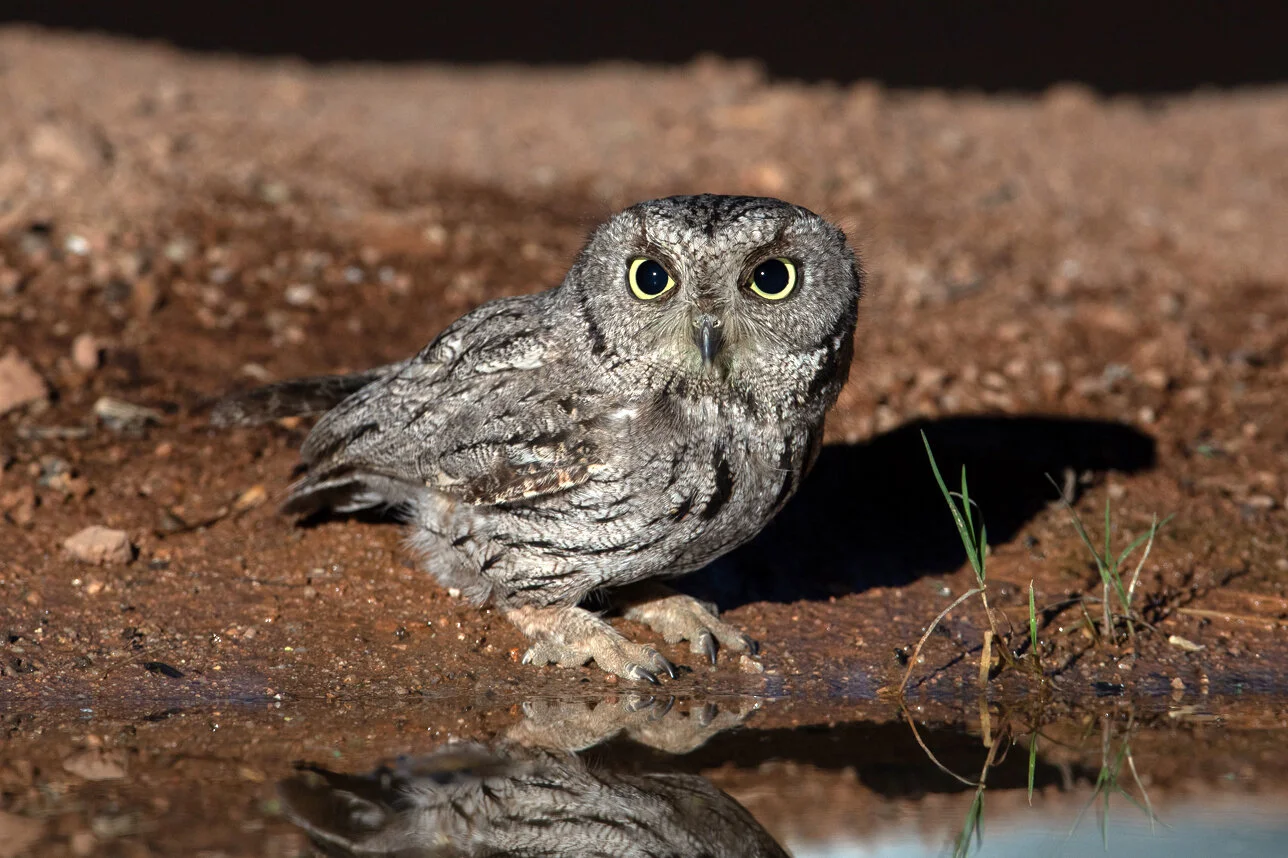Bird of the Month - Western Screech Owl
By Andy McCormick
Western Screech Owl
Megascops kennicottii
Length 8.5””
Wingspan 20”
Weight 5 oz (150 g)
AOU Alpha Code WESO
The owl with the “bouncing ball” call, the Western Screech-Owl is a true night owl becoming active only after sunset.
The Western Screech-Owl is common in many types of woodland but difficult to find because of its up-all-night lifestyle. They begin calling in January and February and are most vocal at dusk and more commonly later in the breeding season. It’s bouncing ball type call is a distinctive series of toots that “begins slowly and then accelerates such as too too tootootootootoo” (Dunne). You can hear this call and see photos at the Macaulay Library.
The Western Screech-Owl is very similar to the Eastern Screech Owl (M. asio), but is nearly always gray and does not have a red morph. However, these owls in the wet and humid Pacific Northwest often display brown coloration. In both colors this owl has strong vertical frontal streaks marked by finer dark crossing bars. It has yellow eyes and a black or dark gray bill with a pale tip.
AN OPPORTUNISITIC HUNTER
The Western Screech has a varied diet and will eat beetles, moths, and other insects, and in addition it forages for small rodents, pocket gophers, small birds, lizards, frogs, and fish. It typically hunts from a perch and catches prey on the ground or in the water. (Kaufman).
Screech-owls are typical owls of the Western Hemisphere and all 25 species belong to the genus Megascops, which was separated in 2003 from the genus Otus, which is now reserved for Old World owls. “Scops” is from the Greek, scopus for watcher (Wikipedia). This owl is named for Robert Kennecotti (1835-1866), a founder of the Chicago Academy of Sciences (Holloway). “Kennecotti was a man who discovered no new birds and published little about them but was one of the most enthusiastic zoological field collectors of his time” (Mearns and Mearns).
ENJOYS THE COMPANY OF WOODPECKERS
The Western Screech usually nests in a tree hollow or an old woodpecker nest hole. In the Pacific Northwest they rely primarily on holes excavated by Northern Flickers and Pileated Woodpeckers and share the mixed woodland environment with them. Big-leaf maple seems to be one of their favorite trees in which to nest. The Western Screech-Owls are non-migratory, but in winter they will move to roost in conifers after deciduous trees have dropped their leaves (Bannick).
The female incubates between two and five white eggs for almost four weeks. During this time, the male brings food to the female. The young are fed by both parents for about a month after hatching, and the young remain with the parents fora while after they leave the nest.
DISTRIBUTION AND CONSERVATION
The Western Screech-Owl inhabits woodland at lower elevations over a range that extends from along coastal habitat from Southeast Alaska though British Columbia, the western United States to Baja California and the central mountains of Mexico. In Washington, the range extends from the western slope of the Cascades to the PacificCoast where it enjoys moist woodland and riparian habitat. There are no continent-wide conservation measures in place for this owl. However, local disturbance in habitat can be caused by selective cutting or clearcutting areas containing potential nesting sites in snags. Expansion of the range of the Barred Owl(Strix varia) along the Pacific Coast may be the most important factor contributing to a decline in population of the Western Screech-Owl (Cannings, et al).
Photo credit to Mick Thompson. References available upon request from amccormick@eastsideaudubon.org


